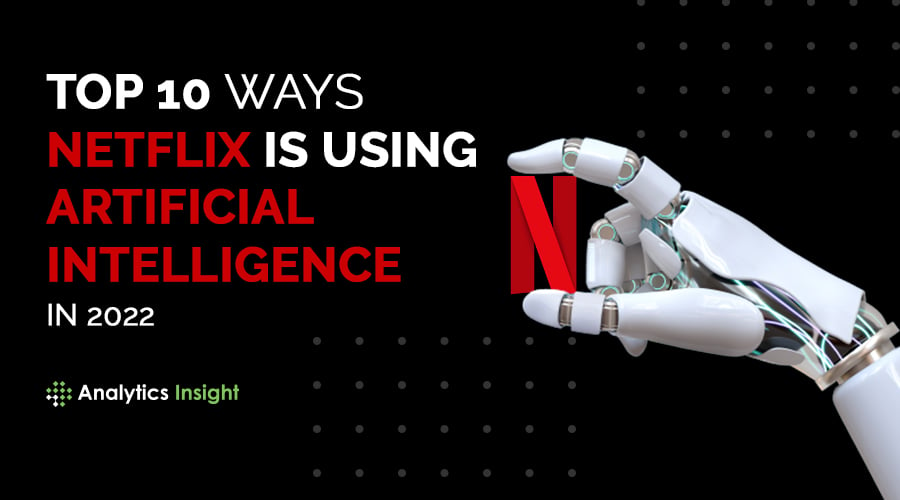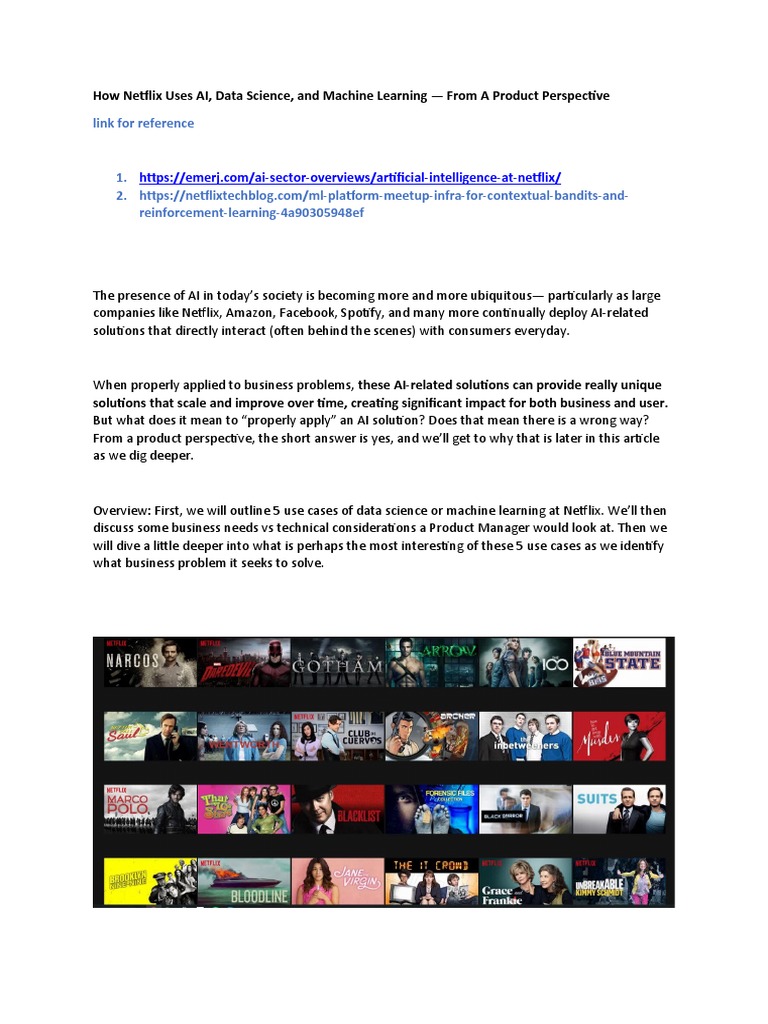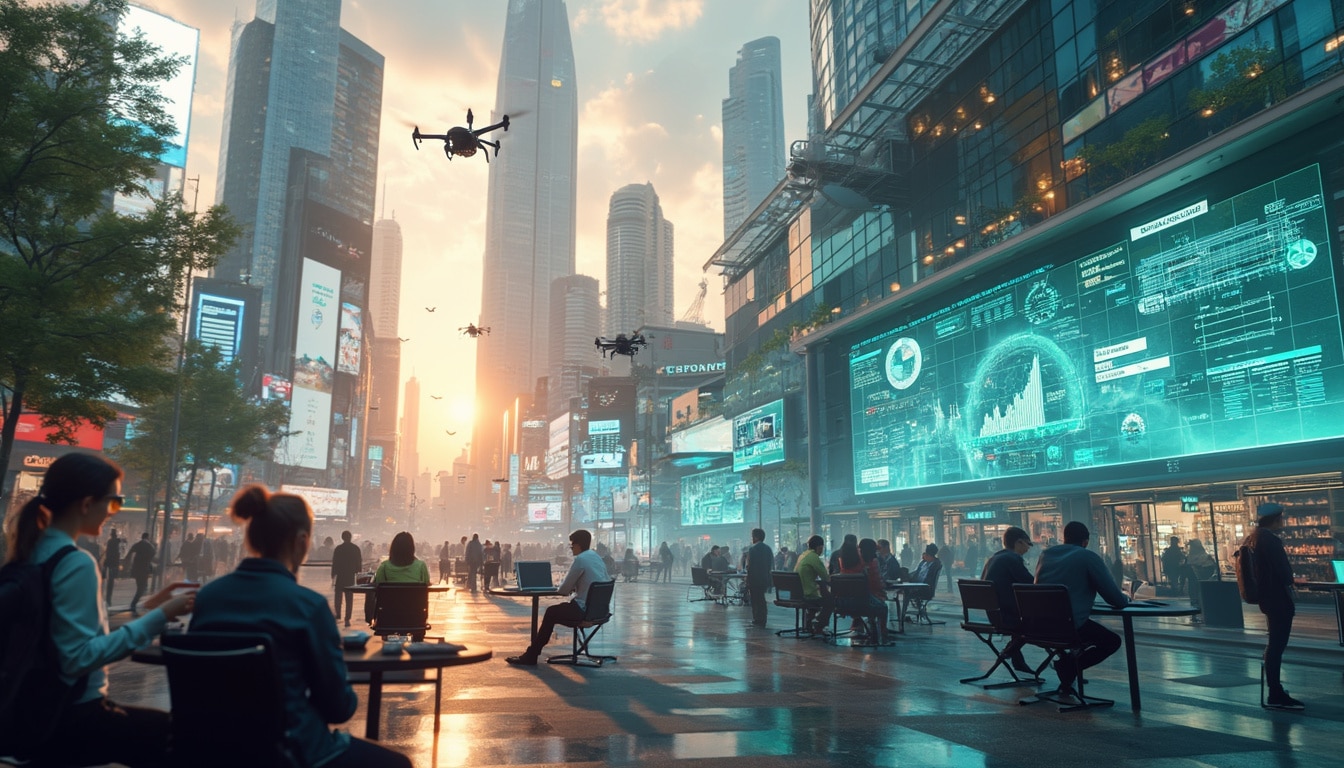In a world where the abundance of content can easily overwhelm users, Netflix leverages machine learning to transform the experience of its subscribers into a personalized and frictionless adventure. With sophisticated algorithms, this streaming platform not only recommends movies and series; it also learns from user behaviors and preferences to anticipate their needs. Thus, Netflix succeeds in reinventing the user experience by making each viewing session unique and captivating while maintaining an authentic connection with its subscribers. Let’s explore together how this innovative approach shapes the way we consume content and redefines our expectations.
Table of Contents
ToggleThe Impact of Machine Learning on Personalization

Netflix has managed to stand out in the world of video on demand by reinventing the user experience through the intelligent use of machine learning. This complex process collects data on user preferences to offer personalized recommendations, thereby transforming how subscribers interact with the platform.
One key to this personalization lies in the analysis of viewing behaviors. Netflix monitors not only what users watch but also how they interact with the content. This includes aspects such as:
- Movies and series watched to completion
- Content abandoned midway
- Ratings given to various titles
With this data, Netflix can create unique user profiles, allowing for more refined recommendations. For example, if a subscriber frequently watches nature documentaries, the algorithm will select similar content to enhance their experience.
Another important aspect is A/B testing. Netflix uses this technique to test different UI elements, such as thumbnails of films or the order of suggestions. By analyzing interactions, the company can determine which versions perform best, thereby optimizing subscriber engagement.
Finally, the use of machine learning also allows for anticipating trends. By analyzing data in real time, Netflix can identify emerging genres or content that will pique subscriber interest. This results in a tailored content offering that evolves continuously, ensuring that every user finds programs they enjoy.
In summary, machine learning is a key technology that allows Netflix to revolutionize the user experience by making every interaction on the platform more relevant and engaging.
Analysis of User Behaviors
Machine Learning has become an indispensable ally for Netflix in its quest to personalize the user experience. With sophisticated algorithms, the platform analyzes vast amounts of data to better understand its subscribers’ preferences.
Each interaction on the platform, whether it’s a watched movie or a rating given to a title, helps enrich the user profile. This analysis of behaviors enables Netflix to provide truly tailored content recommendations for each subscriber.
Here are some ways Netflix uses Machine Learning to personalize its service:
- Personalized Recommendations: Suggestions for movies and series are generated based on the user’s tastes and viewing habits.
- Display Optimization: The platform adjusts the thumbnails of content to grab the user’s attention based on their past choices.
- Trend Analysis: Netflix detects emerging trends and adapts its catalog accordingly to meet demand.
This ability to analyze user behaviors creates a more enriching and engaging viewing experience. Subscribers feel understood and are more likely to remain loyal to the platform, as every recommendation seems perfectly tailored for them.
Machine Learning is not only limited to personalizing recommendations; it also influences other important aspects of the user experience. For instance, A/B tests allow Netflix to experiment with different interfaces and choose the one that generates the most engagement.
The combination of these technologies makes Netflix a leader in the online entertainment field, continuously reinventing the user experience and making navigation on the platform intuitive and enjoyable.
Tailored Recommendations and Adapted Content
Netflix uses machine learning to transform the user experience by offering more relevant and engaging content. With sophisticated algorithms, the platform analyzes viewing behaviors to formulate tailored recommendations. This allows users to discover new movies and series that truly match their tastes.
This approach to personalization offers numerous advantages:
- Content Discovery: Users are exposed to a broader selection of titles they would enjoy, making navigation more enjoyable.
- Increased Engagement: By providing relevant recommendations, Netflix maintains user interest, promoting longer viewing sessions.
- Satisfaction Rates: Subscribers feel better understood and valued, which can reduce churn rates.
Tailored recommendations are further enhanced by tracking viewing data. Netflix observes individual choices, ratings given, and even the time spent on each film. This information continuously feeds the algorithms to refine suggestions and ensure optimal relevance.
Moreover, adapted content goes beyond simple recommendations. The platform even modifies the thumbnails of movies and series to include visuals that might appeal to a particular user. This demonstrates a proactive and innovative approach to maximizing content attractiveness.
This use of machine learning illustrates how advanced technologies are revolutionizing not only the entertainment industry but also the user experience. It’s a true reinvention that promises to redefine how content is consumed in the digital age.
-
Personalized Recommendations
Use of algorithms to tailor content suggestions based on user preferences.
-
Dynamic Video Quality Adjustment
Analysis of connection conditions to optimize playback quality in real time.
-
User Behavior Analysis
Identifying viewing habits to enhance engagement and satisfaction.
-
Data-Driven Content Creation
Using trends and preferences to guide the production of new series and films.
-
A/B Testing
Implementing tests to optimize the interfaces and features offered to users.
-
Advanced Classification System
Using tags and metadata with machine learning to refine searches.
-
Retention Rate Predictions
Predictive models to identify users at risk of unsubscribing and personalize the approach.
-
User Interaction
Using chatbots to respond instantly to questions and improve support.
User Interface Enhancement

Netflix transforms the user experience through significant improvements to its interface. Thanks to advancements in machine learning, the platform manages to make navigation more intuitive and personalized.
Among the notable aspects of this enhancement are:
- Personalized Recommendations: The algorithm analyzes viewing habits to suggest content tailored to each user’s tastes.
- Dynamic Interface: Users will see their homepage evolve based on their interactions, creating a customized experience.
- Visual De-cluttering: The platform has opted for a clean design that facilitates content search and reduces cognitive overload.
These innovations are not limited to aesthetics. They directly impact customer satisfaction by simplifying access to relevant content and making exploration enjoyable.
By integrating behavioral data, Netflix can anticipate user preferences, which further enhances engagement. The goal is clear: to provide a personalized experience that goes far beyond mere content consumption.
The platform’s adaptability to emerging trends is a major asset that ensures its longevity in a highly competitive market. It is evident that Netflix emphasizes technology to enrich the user relationship.
Navigation and Search Optimization
The Machine Learning is an essential component of the user experience at Netflix. Through massive data collection and analysis, the platform adapts to user preferences. This results in a smoother and more intuitive interface, where every element is optimized to meet subscriber expectations.
The navigation and search optimization is one of the major focuses of this transformation. By integrating sophisticated algorithms, Netflix now offers a more personalized browsing experience. Users can easily find series and movies that match their tastes without having to sift through endless lists.
Here are some concrete examples of the improvements made:
- Personalized Recommendations: Based on past viewing behaviors, users receive suggestions tailored to their preferences.
- Intelligent Search: The search engine accounts for typos and linguistic variations, facilitating content discovery.
- Dynamic Categorization: Movies and series are grouped based on opportunistic themes, allowing users to explore similar genres.
Furthermore, the understanding of user preferences allows Netflix to adjust its interface according to trends. Visual elements, such as images and trailers, are automatically displayed based on what attracts each subscriber.
This targeted and personalized approach reinforces user engagement, transforming their experience into a true customized journey through the vast content catalog. By relying on data and machine learning, Netflix ensures it stays at the cutting edge of innovation and customer satisfaction.
Adaptive Design Based on User Preferences
Netflix utilizes machine learning to provide a tailored user experience, transforming the way users interact with the platform. One of the most remarkable aspects of this transformation is the enhancement of the user interface, which responds accurately to each viewer’s preferences.
The adaptive design of Netflix relies on in-depth analysis of user behaviors. Using sophisticated algorithms, the platform collects data on viewing choices, connection times, and even skip or pause behaviors. This information enables Netflix to personalize displayed content, ensuring that each user sees the most relevant recommendations.
Here are some key elements of Netflix’s adaptive design:
- Dynamic Thumbnails: Visual displays change according to user preferences, maximizing content attractiveness.
- Personalized Recommendations: Assistance to discover new films and series based on viewing history.
- Category Personalization: Content sections adapt based on individual viewing styles.
This user-centric approach contributes not only to improving engagement but also to reinforcing subscriber loyalty. Users feel better understood, encouraging them to spend more time on the platform. By investing in machine learning, Netflix is not just adapting; it is redefining the viewing experience, making every interaction unique and meaningful.
Finally, Netflix’s ability to evolve based on user preferences is an excellent example of how machine learning transforms traditional interactions, making entertainment both more efficient and pleasant.
The Future of Streaming Experience
Connaissez-vous le Machine Learning ? Il permet d'analyser des données pour ensuite prédire les comportements. Découvrez son fonctionnement avec un exemple très simple : la consommation de chocolat chez N26.https://t.co/KFAmmo0l67
— N26 France (@N26FR) September 10, 2018
Netflix continues to innovate in user experience by integrating machine learning into its services. With sophisticated algorithms, the platform can offer highly personalized content, transforming the way users interact with their favorite shows and films.
The future of the streaming experience hinges on the ability to anticipate subscriber tastes and preferences. By analyzing viewing behaviors, Netflix can adapt its recommendations in real time. Here are some examples of this personalization:
- Content recommendations based on viewing histories.
- Creation of personalized trailers for specific films.
- Targeted messages to encourage the viewing of underrepresented content.
The platform also uses machine learning to optimize its interfaces. A/B testing allows Netflix to see which design changes increase user engagement. This includes button placement, colors used, or how recommendations are displayed.
Another manifestation of machine learning lies in the continuous improvement of streaming quality. Algorithms can dynamically adjust video quality based on available bandwidth, ensuring a smooth and enjoyable experience even under less than ideal connection conditions.
By integrating these innovations, Netflix is not just following trends; it is shaping them. This proactive approach not only attracts new subscribers but also retains those already present, providing them with an experience that constantly adapts to their needs.
Integration of New Technologies
Netflix, the uncontested leader of streaming, utilizes machine learning to transform the experience of its users. This technology allows for the personalization of content recommendations based on subscribers’ preferences and viewing behaviors, making the experience not only more intuitive but also incredibly engaging.
With sophisticated algorithms, Netflix analyzes a multitude of data to identify trends and user tastes. Every time you watch a movie or series, your choices contribute to refining future recommendations. This means that the service becomes increasingly relevant and personalized over time.
AI-based recommendations do not stop at content selection. Netflix also uses machine learning to optimize its marketing campaigns. By predicting the content likely to attract subscribers’ attention, the company can maximize the impact of its promotions and improve the acquisition of new users.
The technologies developed by Netflix are not limited to mere content recommendations. The company also implements advanced techniques for streaming optimization. For example, by analyzing real-time data, the service can adjust streaming quality based on user bandwidth, ensuring a smooth and uninterrupted visual experience.
When we talk about the future of the streaming experience, the integration of new technologies is essential. Here are some key aspects:
- Enhanced Personalization: Tailoring content based on each user.
- Continuous Algorithm Improvement: Non-stop optimization of recommendations.
- Increased Interactivity: Opportunities to interact with content in innovative ways.
- Immersive Experiences: Exploring augmented and virtual reality.
In this digital age, innovation is essential to remain competitive. Netflix, by reinventing the user experience through machine learning, perfectly illustrates this need for transformation. The fusion of technology and entertainment opens exciting prospects for users and businesses, brimming with opportunities to come.
Perspectives on Content and Interaction Evolution
The streaming sector is transforming at a breakneck speed, and Netflix is at the forefront of this revolution thanks to machine learning. This technology allows for the analysis of massive data to personalize the user experience in unprecedented ways.
With sophisticated algorithms, Netflix does not merely provide content. It anticipates users’ preferences based on their viewing habits. For instance, suggestions for series and movies are adapted in real time, creating a highly engaging user experience.
Recommendations are just one part of the equation. The interface itself evolves based on each user’s interaction. By studying the time spent on each title, click-through rates, and even moments of pause, Netflix can refine its interface to make navigation more intuitive.
Perspectives on Content and Interaction Evolution:
- Increased Personalization: Every user enjoys a unique interface that evolves with them.
- Original Content: Data analysis allows Netflix to create productions likely to capture subscribers’ attention.
- Strengthened Engagement: Interactive features, like content selected based on emotions, are conceivable through machine learning.
This machine-learning-based approach not only makes Netflix a leader in content but also enables it to offer an unmatched user experience, redefining how we consume series and films.
As technology advances, opportunities for interaction and personalization will continue to grow, placing Netflix at the center of an increasingly immersive streaming experience.











